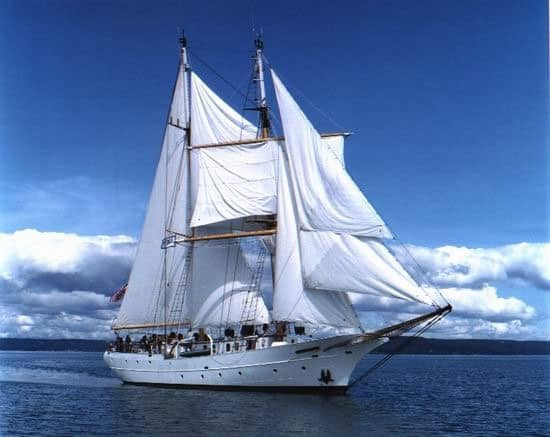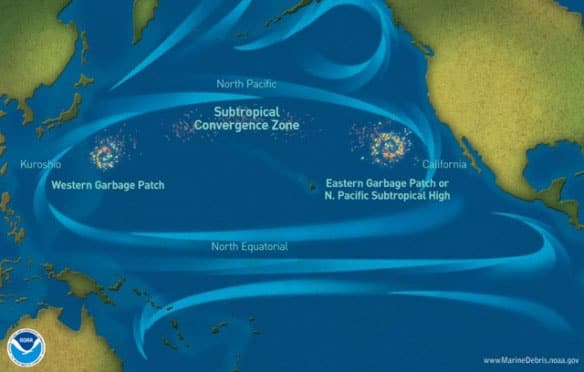
Trepidation. I get antsy in the days just before I go offshore. There’s so much mental preparation. See this person, say goodbye to that person, do this, write that, go there one last time. It’s exhausting – but the chance to sail offshore is, to me, a sublime pilgrimage. And if given the opportunity, I will not turn it down for anything else.
I leave October 2nd for a six week research expedition aboard the SSV Robert C. Seamans, a 134 ft. schooner brigantine operated by Sea Education Association. We will embark from San Diego and arrive in Honolulu in early November.
The Seamans, pictured above, is gorgeous. Built in 2001, she has over 8,500 square feet of sail. If you cut all nine of her sails up, you could canvas the floors of a seven bedroom house and still have plenty of sail to cover a regulation-size racquetball court.

I’ll be a volunteer deckhand on a team investigating an area of the ocean some have referred to as “The Great Pacific Garbage Patch.” This “garbage patch” has attracted plenty of press (much of it exaggerated) due to the large concentration of plastic debris that have been found floating on the surface. Some say it’s “the size of Texas”, others “twice the size of the continental United States.” One Dutch architect has even drawn up plans to build self-sustaining “recycled islands” out of the plastic debris.
Ideas and size statistics like this are imaginative but fail to convey the problem plastics pose to ocean ecosystems. For starters, you can’t “see” much of the plastic debris, let alone build houses on it. Due to wave action and U.V radiation from the sun, large pieces of plastic break down into millimeter sized pieces called “microplastics.” If you didn’t have a net capable of catching these tiny pieces of plastic, you would never know you were in the world’s largest landfill.

Two years ago, I sailed with S.E.A. to study the lesser known “Great Atlantic Garbage Patch”, located just southeast of Bermuda. It was the first federally-funded research expedition to study plastic debris in the open ocean. A bunch of news outlets covered our progress such as National Geographic, NPR, and the Boston Globe. A filmmaker even created an award-winning documentary using footage taken from the trip.
This will be only my tenth time leaving land completely behind. Looking around the horizon and seeing nothing but the gleam of the ocean is like receiving a hug from a stranger: curiously warm but tense. It takes a few days to get acclimated. Thank god I don’t get seasick.







